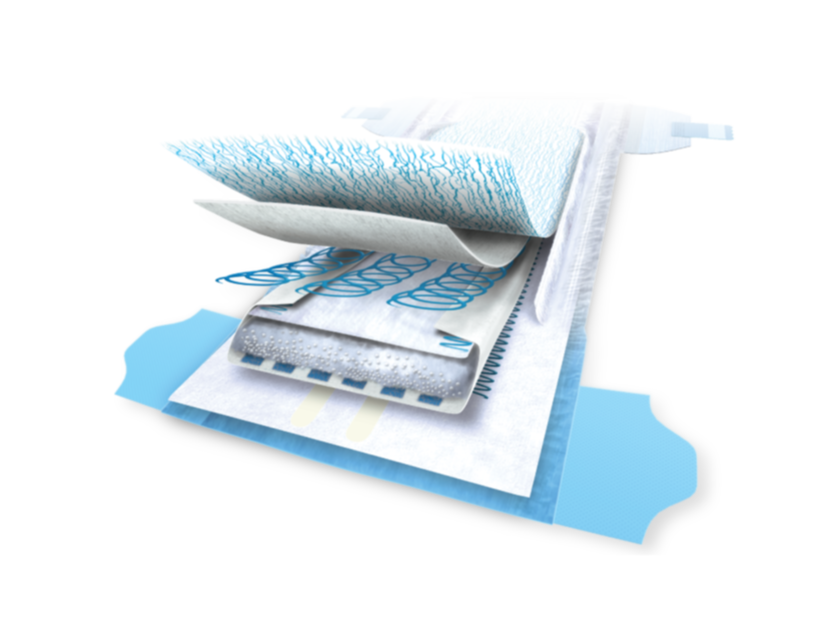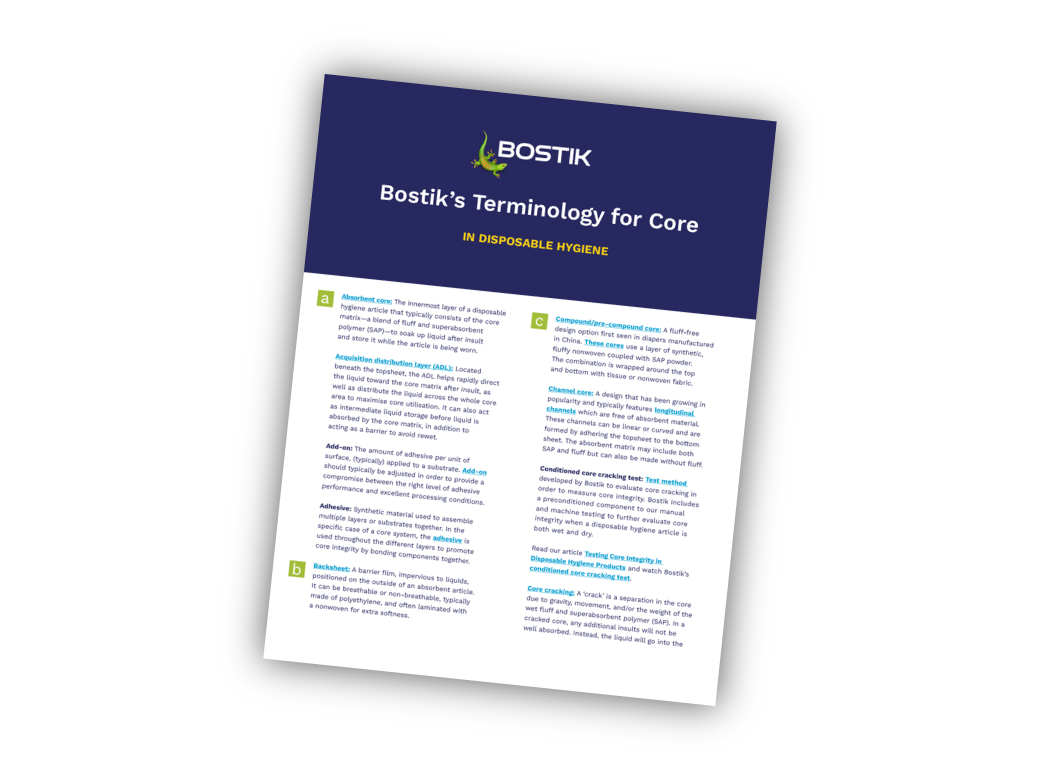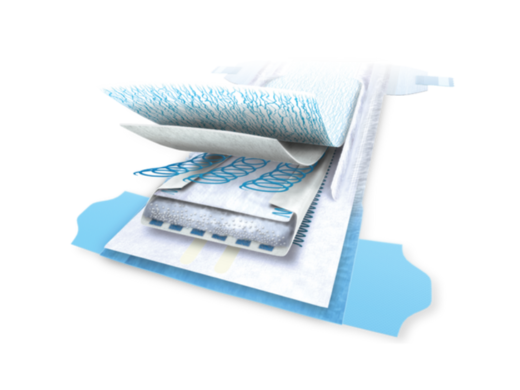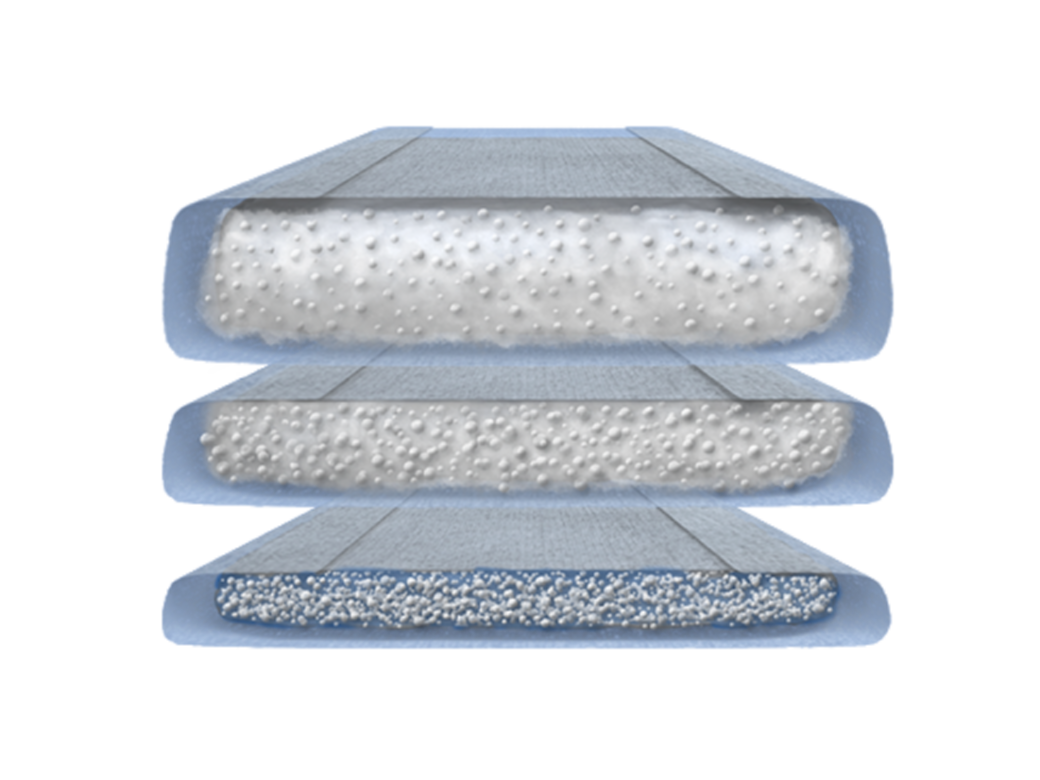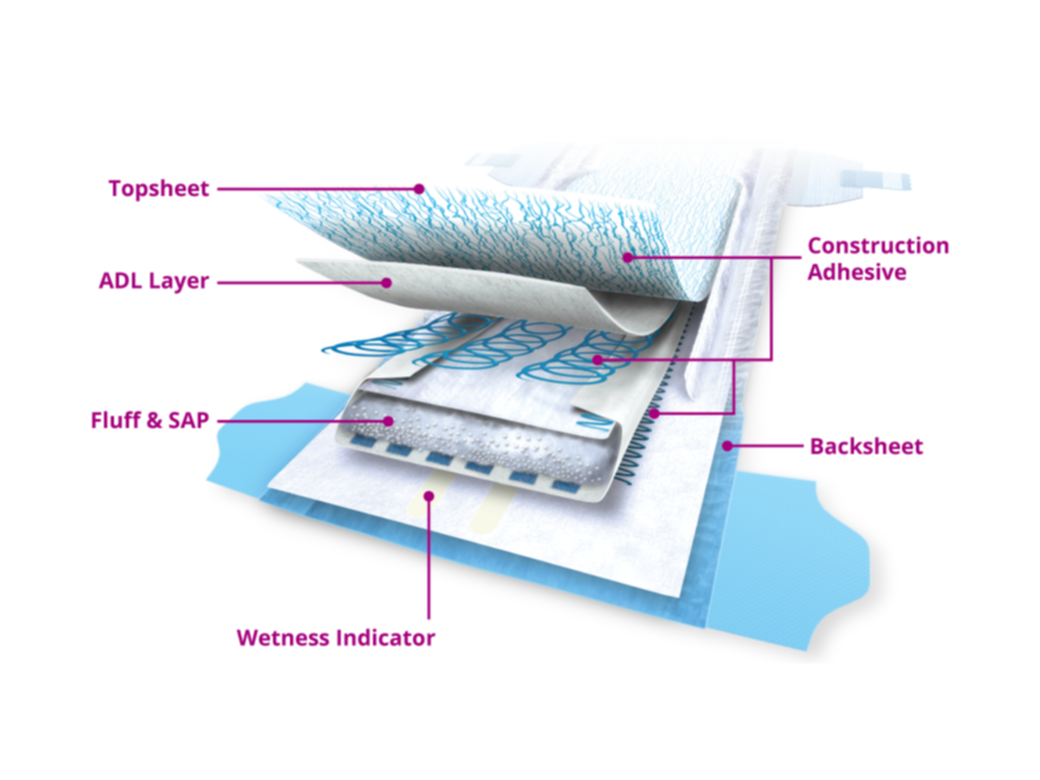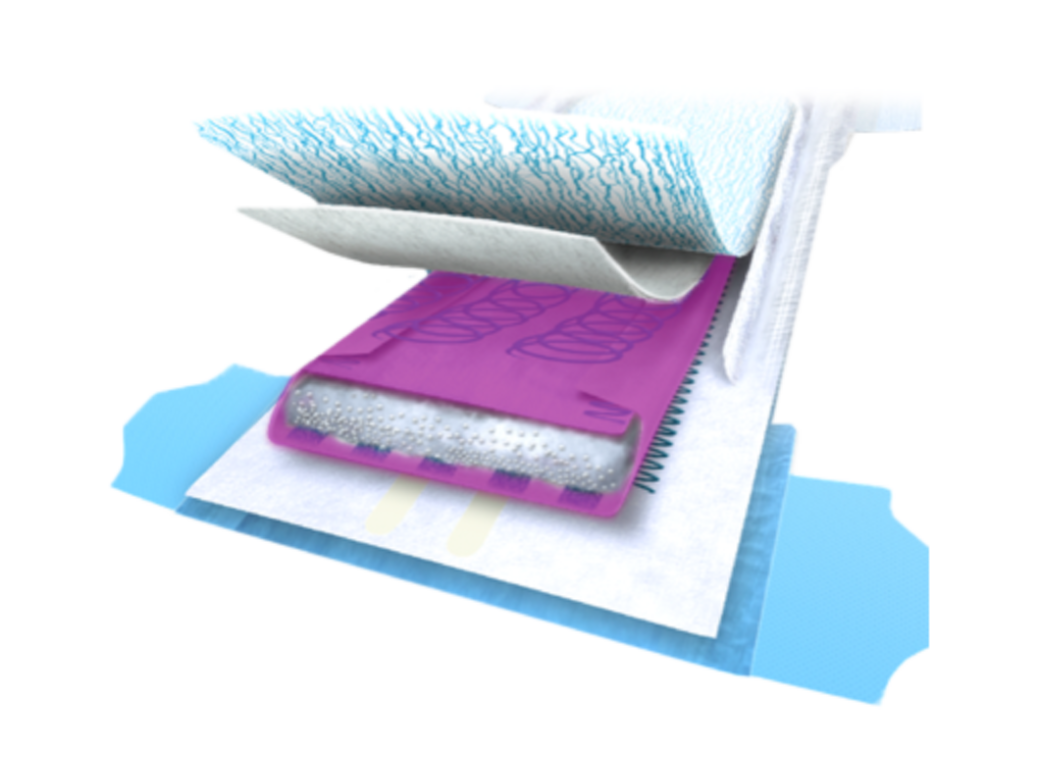Optimizing Traditional and New Core Designs for Adult Incontinence
Core designs play a key role in meeting the various needs of incontinent adults. These needs include:
- Leak prevention
- Skin wellness
- Softness
- Discretion
To meet these needs, some disposable hygiene article manufacturers are looking to improve their traditional core designs. Others want to offer new designs, including fluff-free options.
Most, if not all, medium to heavy adult incontinence products include a traditional absorbent core matrix . The matrix consists of both cellulose fluff and superabsorbent polymer (SAP). These cores contain more fluff than SAP and appeal to consumers who view more bulk as being softer and offering adequate absorption. More-fluff designs also represent the best solution to provide high absorption levels at lower costs in institutional markets.
However, as users value discretion, the trends move toward thinner cores. This is particularly true with underwear-like products.
Adhesive’s role in core designs is central in product performance and integrity. This is especially true for core designs with less fluff:
- Because fewer fluff fiber entanglements are available, keeping SAP powder in place becomes challenging. A core adhesive can help.
- Loose SAP is easily lost when moving the fluff/SAP core matrix from the drum to the backsheet. A core adhesive helps contain the SAP within the core matrix to reduce the amount of waste.
- From a consumer comfort perspective, a core adhesive will keep the SAP evenly distributed so the product wearer will not feel areas of loose SAP building up in the core.
Although it may take some more time before we see the following core designs on the market for adult incontinence, some manufacturers are eliminating fluff completely. Benefits of being fluff-free include simplifying supply chain and reducing overall product weight, but important things to consider include:
- Fluff absorbs liquid quickly
- SAP by itself absorbs liquid relatively slowly, with limited wicking properties
A core adhesive can help perform the functions of fluff. This is especially true with designs that utilize an adhesive web, adhesive tack or pockets.
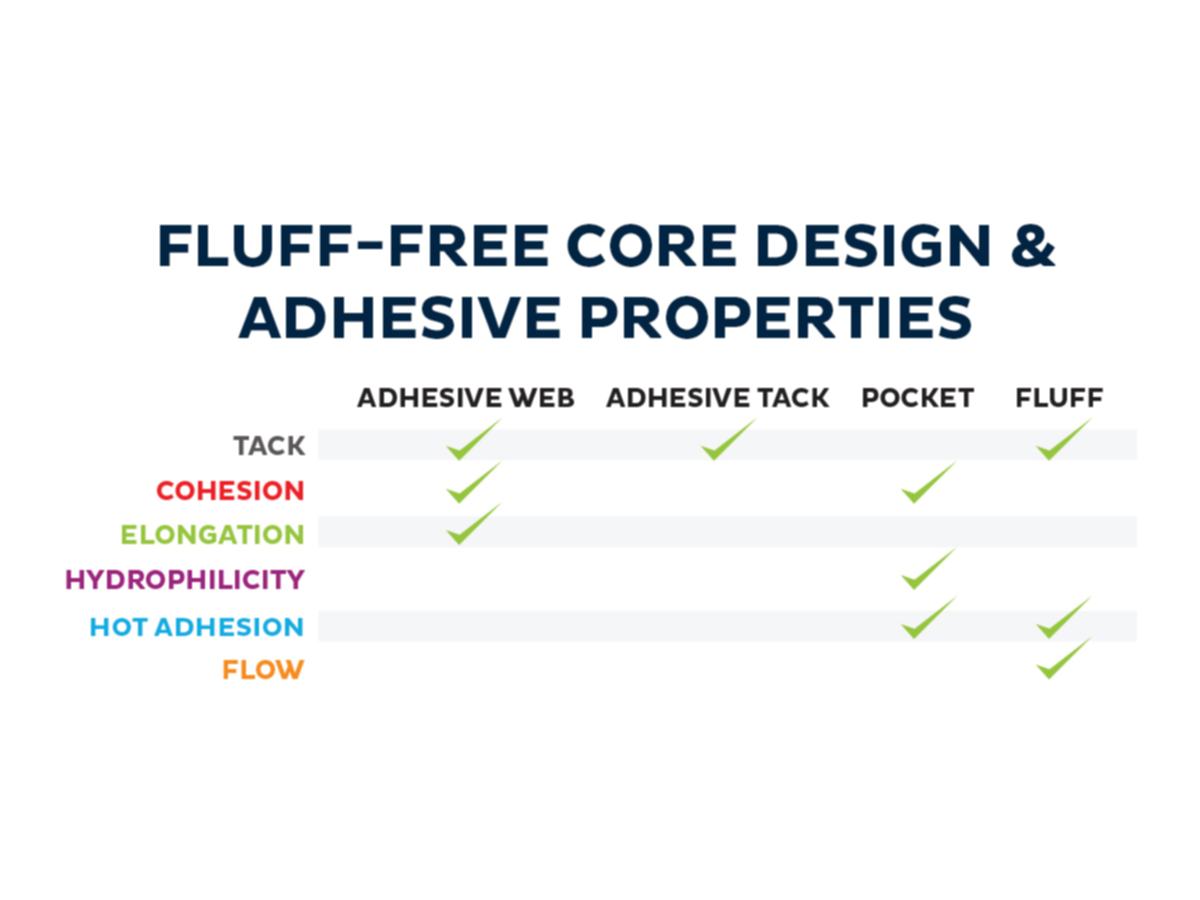
Compound cores are a fluff-free design option to consider for increased discretion. Compound cores use a layer of synthetic fluffy nonwoven fiber, which has less wicking ability than cellulose fluff, mixed with SAP powder and wrapped around the top and bottom with tissue or nonwoven fabric. Because the core is generally made offline and moved several times, SAP shakes loose more easily. Using the right core adhesive reduces SAP loss, improves core integrity and impacts wicking. The use of compound cores in adult incontinence products has yet to be reported, but they are an interesting option.
Channel cores can also be made without fluff, in addition to designs that blend both SAP and fluff together. An adhesive is needed to keep the SAP in place and support core integrity by bonding nonwoven to nonwoven to keep the channels intact before and after fluid is absorbed. Channel core designs are also helpful in discretion, as they conform better to the product wearer’s body once fluid is absorbed.
If you are considering a new approach to optimizing your core designs for adult incontinence, Bostik’s core experts recommend:
- Choose your core design path: more fluff, less fluff, fluff free, compound or channel
- Review the overall product design changes that are needed
- Involve core experts like Bostik to help with adhesive selection
Ready to talk?
Get in touch with a Bostik core expert here.
Compound cores are a fluff-free design option to consider for increased discretion. Compound cores use a layer of synthetic fluffy nonwoven fiber, which has less wicking ability than cellulose fluff, mixed with SAP powder and wrapped around the top and bottom with tissue or nonwoven fabric. Because the core is generally made offline and moved several times, SAP shakes loose more easily. Using the right core adhesive reduces SAP loss, improves core integrity and impacts wicking. The use of compound cores in adult incontinence products has yet to be reported, but they are an interesting option.
Channel cores can also be made without fluff, in addition to designs that blend both SAP and fluff together. An adhesive is needed to keep the SAP in place and support core integrity by bonding nonwoven to nonwoven to keep the channels intact before and after fluid is absorbed. Channel core designs are also helpful in discretion, as they conform better to the product wearer’s body once fluid is absorbed.
If you are considering a new approach to optimizing your core designs for adult incontinence, Bostik’s core experts recommend:
1. Choose your core design path: more fluff, less fluff, fluff free, compound or channel
2. Review the overall product design changes that are needed
3. Involve core experts like Bostik to help with adhesive selection
Ready to talk?
Get in touch with a Bostik core expert here.
